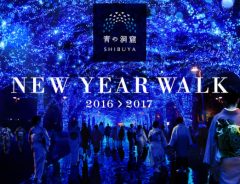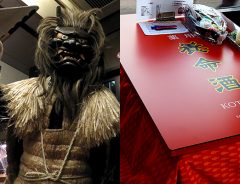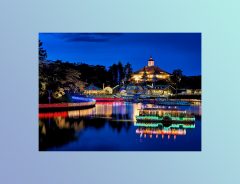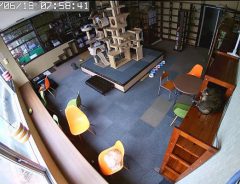
Photo Credit: Connie Sceaphierde
Remembering the victims of the Great Hanshin Earthquake as 200,000 lights brighten up the city of Kobe
- Tags:
- Earthquake / Hanshin / Illumination / Kobe
Related Article
-

Japanese School Troubled by “Curry Bullying” Incident Bans Curry From School Lunch
-

Walk Through The Breathtaking Blue Sea Of This Year’s Shibuya Illuminations
-

Registration Opens For Final Fantasy XIV-themed Wedding Ceremonies In Japan
-

Stay Warm And Entertained In Winter Aboard The Yomeishu Kotatsu Train
-

Enjoy lakeside illuminations and cute alpacas at Tochigi’s Nasu Rindo Lake View park
-

Watch Japanese Cat Cafe Cats React Moments Before Osaka Earthquake


Photo Credit: Connie Sceaphierde
Each year, during December the streets of Kōbe are lit up in an illumination that is made to pull on your heart strings. Kōbe’s Luminarie event is a light display that has been ongoing for over 20 years as a symbol of hope and transforms an area in the center of the city into a dazzling celebration of light .
The illumination which lasts for a few hours every day for a total of 2 weeks is spread across a kilometer of streets in central Kōbe. Many roads in the area are closed to vehicles during the event, with the odd few businesses also closing down, but the majority of shops and restaurants keep their doors open as more than 4 million people come to view the light display every year.
The light installation has been lighting up central Kōbe every December since 1995 to commemorate the widespread destruction of the Great Hanshin Earthquake of that year and to remember all of the victims that suffered from the effects of the natural disaster.
The display, which is produced by the italian art director Valerio Festi and Japanese Hirokazu Imaoka, features european style influence and is made up of lights donated to Kōbe city by the Italian Government following the devastating earthquake that hit the city in 1995. The installation is made of 200,000 hand painted lights and is completely environmentally friendly, using electricity that is generated from biomass.
The lights line a kilometer of streets from Motomachi station all the way to Higashi Yuenchi Park. Photo Credit: Connie Sceaphierde
The tragedy of the Great Hanshin Earthquake
The epicenter of the Great Hanshin Earthquake was recorded on the northern point of Awaji island which struck at 5:46am on the 17th of January in 1995. Kōbe, which was 20km from the epicenter was the closest major city to the earthquake and was hit by the strongest tremors of the disaster.
The earthquake caused the loss of 6,500 lives, 4,600 of which were from Kōbe and has been dubbed the 2nd worst earthquake of the 20th century, after the 1923 Great Kanto Earthquake which caused over 140,000 deaths.
Damage to infrastructure was widespread across the city, with more than 400,000 buildings completely destroyed or irreparably damaged, destruction of railroads and vehicular roads in the city and the majority of Kōbe port needing replacement. The Akashi Kaikyo Bridge, which was being built at the time close to the earthquake epicenter, was reportedly lengthened by a full meter due to displacement along the tectonic fault it was being constructed on.
The Hanshin expressway, believed at the time to be safe from earthquakes had received damage to more than 50% of its structure and had collapsed in 3 locations. Images of the collapsed elevated expressway made front pages in newspapers across the world. The collapse of the road had caused a huge disruption to a major intercity link between Kōbe and Ōsaka, and the road wasn’t fully reopened until over a year later on September 30th 1996. In addition to damage to the roads and the expressway between Kōbe and Ōsaka, rail services between the two cities were also affected with only 30% or the tracks left operational. A section of the Shinkansen track had also collapsed, which caused the line to be fully shut down. Despite the damage to tracks and stations, a large effort was put in by workers and volunteers and train lines had reached 80% operability in one month and resumed full service by March of the same year.
Residents of Kōbe city were either afraid or unable to return home as aftershocks shook the city for over a week and for the next month, more than 250 fires ravaged the city, with water, electricity and gas supplies also being cut off.
The first Kōbe Luminarie illumination was lit during December of the same year to spark hope and fire in the hearts of residents of Kōbe. The illumination was set up to represent hope, recovery and renovation as so many were trapped in darkness following the turmoil of the earthquake. Victims who died in the earthquake are remembered in naming ceremony held on the opening night of each illumination, and silent prayers are offered to those who suffered from the tragic event.
Originally intended to be a one time event, the display became an annual illumination following its immense popularity and demand from citizens and visitors alike. The event itself is free, however, donations are warmly welcomed and help to keep the event running year after year.
2018 marked the 150th anniversary of Hyogo Prefecture. The Luminarie paid tribute to the event in the illumination. Photo Credit: Connie Sceaphierde
How you can see Kōbe Luminarie
The 2019 illumination ended on the 15th of December, with 3,469,000 people visiting the lights this year, but will be switched back on in 2020 for another winter illumination. Watch the official Kōbe Luminarie website for dates of 2020’s light display.
The Kōbe Luminarie event starts at Motomachi station which is served by the JR Kōbe Line, and is extended across a kilometer of lit up streets to Higashi Yuenchi Park.